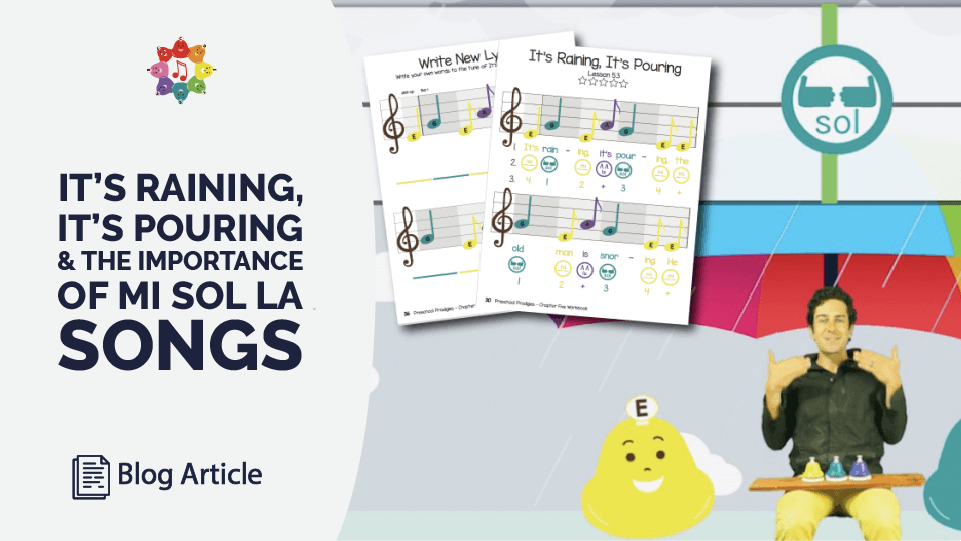Hey everyone, and welcome to “It’s Raining, It’s Pouring.” This is a classic Mi Sol La song (aka Sol Mi song) where we sing, sign & play along with a combination of 3 famous musical notes.
#HappyMusicing
https://youtu.be/koxz6s33BOI
The Universal Nature of Mi Sol La
Whether you know about Solfege or don’t, chances are that you can already sing a Sol Mi La pattern just by thinking back to your childhood. If
If you can imagine the sound of “Nanny Nanny Boo Boo”… that’s a classic combination of Mi, Sol and La.
You might know it as…
“Nanny nanny boo boo (poo poo)”
“Lero lero candilero”
“Nananananère”
…but in cultures all across the world, this lattern pattern of Sol Sol Mi La Sol Mi shows up in early childhood. For Prodigies, we use mostly Fixed Do, but it’s really the relativity of the pitches ( mostly the minor third between mi and sol) that seems almost build into the human brain.
If you’re having a hard time imagining the three notes, sing “Ring Around the Rosie” or “It’s Raining, It’s Pouring” and you’ll stumble upon the similarities immediately. Or watch this kid shake her bum around while singing “Nanny nanny boo boo, you can’t catch me.”
https://www.youtube.com/watch?v=SDr3YElBToc
For many years, people believed it was a universal human melody to some degree, regardless or exposure or culture. I always thought this was so cool!
As harmonious as that sounds in though, modern research suggests that it’s really more of just a very widespread tune. On one hand, that’s kind of a bummer. On the other hand, it shows how powerful simple melodys can be among children, which is almost all of what we do here at Prodigies.
But whichever mi-sol-la origin story you believe in, when it comes to teaching young kids music, these songs still serve an undeniable purpose. Lot’s of schools and school districts are using more and more Sol Mi songs (we liked to call them Mi Sol La songs…same thing) to help get kids feeling comfortable with music.
For starters, the melody of nanny-nanny-boo-boo is well-known enough by both children and adults that reverse engineering the melody into its individual notes is surprisingly easy. songs with these three notes are easy to learn.
Even if you don’t have an instrument, if you can mentally break nanny-nanny-boo-boo into the three notes Mi Sol and La, then you can use a memorized reference to sing any Mi Sol La song.
And because children seem to latch onto this melody for one reason or another, this makes them great for classroom chants, beginner melody writing, and ear training games.
So, to celebrate the power of Mi, Sol and La, we arranged a collection of songs and made them big, colorful and easy to read.
We also added the hand-signs and a numbered verse for counting rhythms after you’ve sung the melody!

